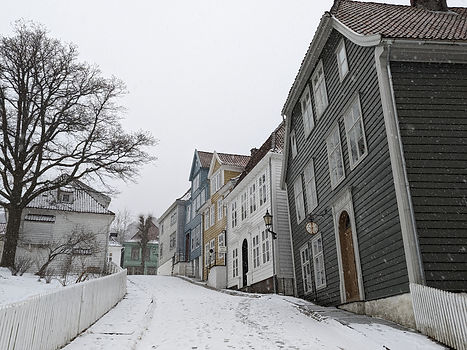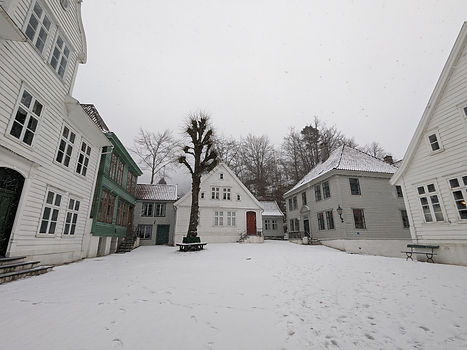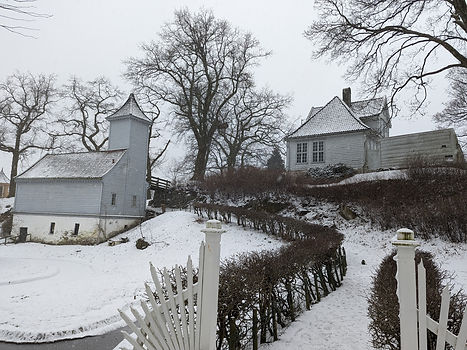
Norway
A Nordic country of 5.4 million people, straddling the artic circle, and known for its skiing prowess. There are so many things to see from the fjords in the west, to the artic tundra in the north, and the bustling capital Oslo. You even have a choice of over 200,000 islands, and some of the most pristine beaches in the world, but don’t forget to pack a sweater along with your swim suit.
I visited in March, so I didn't get to enjoy the beauty of summer in Norway. But, those that have looked into traveling to Norway know that prices can get pretty steep in the height of summer. And, early booking will be necessary. As I don't normally plan too far ahead, the first time I looked into visiting was in July while I was in Stockholm. But, for example, there was not a single rental car available in all of Bergen for the following week. Plus, the lodging that was still available wasn't the best choices. So, I had to come back the following spring.

Oslo
The capital and largest city
Bergen
The second largest city, the largest port, and the former capital.

Oslo to Bergen Train
Said to be one of the most beautiful train routes in the world, this was a no brainer for me to choose when leaving Oslo and going to Bergen. Of course, flying would be faster, and about the same price, But I had to see the beauty for myself…it did not disappoint. The train tops out at Finse station at 4000 feet (1222 meters). This high point is about 2.5 hours east of Bergen and 4.5 hours west of Oslo. In early March, during my trip, there is still feet of snow on the ground for much of the trip and the outside temperature dropped to as low as 3 degrees Fahrenheit. I understand the snow lasts until April, typically. It feels so good to be in the warm train drinking hot chocolate!
However, I recommend booking early. Even in the winter, these trains sell out. And, if you want a widow seat for the view, you better get it on with plenty of time.
The only downside on my trip is that my train departed over 2 hours late, so much of the ride (and apparently the best parts) ended up being in the dark. Plus, I didn’t book early enough, so I didn’t have a window seat to fully enjoy the view. C’est la vie. Live and learn!










Skiing
Snow skiing is ubiquitous in Norway, and it seemed everywhere I went, people had skis. At the café, the market, on busses and trains. Even my Airbnb in Oslo had skis in it. No wonder this country dominates the Olympics in skiing events.




Oslo
The capital, with 635,000 people, is remarkable for its museums and parks. It is said that 95% of the residents have a park within 1000 feet of their home, and they are popular even in the winter.
But, when it is too cold outside, feel free to enjoy world class museums. Notably, the National Museum, the Norwegian Museum of Cultural History and the Munch Museum, among many others.
Though not was colorful as cities like Zagreb or Stockholm, there are wonderful highlights throughout parts of Oslo that add a splash of color…very welcome while walking the streets in the cold winter.






Getting to and around Oslo
Arriving by plane is quite easy. The airport is north of the city, but the Fly Express train easily takes you right into the center train station (Oslo Central or Oslo S).
Once in the city, most of what you will want to visit is near the center, and public transportation abounds. Subway, trams and busses are everywhere. The easiest way to get around is use the Ruter app. Once you put a credit card in, tickets are all acquired with just a push of a button (open the app, and hit “purchase ticket”). They last for an hour, include transfers, and cost 40 kroner each. (about $3.86). There is no need to present the ticket while boarding any of the transportation. You simply walk on. However, you need the ticket purchased before boarding. There are random checks and the fine for not having a ticket is 950 kroner (about $91) if paid on the spot or 1150 kroner if paid later.
National Museum in Oslo
An impressive display of Norwegian art from decorative arts (furniture, clothing, etc) to classical art and modern and contemporary art, all in one place. Though, it focuses largely on Norwegian artists, there is still a representation of other popular artists including Picasso, Monet, and Rodin, among others. And, of course, a very large selection of Munch (including The Scream).

Akershus Fortress - Oslo
The original castle was built around 1300, and the fortress on the peninsula was greatly expanded in the 17th century. It is still currently used by the Norwegian Armed forces and the Defense College.


Oslo Cathedral
17th century cathedral still used today for royal and state events, as well as regular services.

The Royal Palace Oslo
The home of the King and Queen, and situated at the end of Karl Johans Gate, on the Bellevue rise, the palace was built between 1825 and 1849. It is open for tours only in the summer, but it beautiful to see year-round. It is surrounded by the Palace Gardens, free to walk around all year.


Oslo Opera House
Just 15 years old, the modern building is situated directly next to the train station and the harbor. Seating over 1300 people, it is the home of the National Opera, Ballet, and Theatre groups.
Performances are quite regular. While there in March, there were nearly daily performances of your choice of 7 different operas, ballets, and concerts.
Frogner Park Oslo
Wonderful, even thought provoking, sculptures by Gustav Vigeland set in the midst of this 110 acre park that was once the 18th century gardens of Frogner manor. In the early 20th century, the city purchased it and made it a public park that is now visited by over 1 million people per year.

Bergen
Norway’s second largest city. However, set in the heart of the fjords, and surrounded by hills, it is a much more scenic area. Founded in the 11th century, the city was also Norway’s capital in the 13th century. It is still Norway’s busiest port and helps support the tourism industry with cruises as well as fishing and oil. And, if you are looking for a place to escape heat in the summer, this is a great place as the average high temperature in July is 66 degrees Fahrenheit (19 C).
The pictures below were all taken in the same week of March, so you can see how the weather can change quickly.




Bryggen
A medieval wharf in the historic harbor district known for its colorful, wooden-clad boat houses. Today, full of shops and restaurants, it still does historical tours and demonstrations.




Bergenhus Fortress
Waterfront, stone-built fortress, and a museum. It includes Rosenkrantz tower, which dates back to the 13th century, but its present form is from the 16th. The fortress is still used by the Norwegian Defense Agency.


St Johns Church Bergen
Gothic Catholic church with red brick and copper accents. Built between 1891 and 1894; it is the largest church in Bergen, seating over 1200 people.


Walks above Bergen - and a funicular
There are plenty of walking trails top the hills above the city. A must do for the views and the fresh air. But, if the steps are too much, there is also a funicular that starts just 2 blocks from the harbor...Floibanen. It takes just 5 to 8 minutes to reach the top and a round trip only costs 130 NOK (about 12 Euro). A good bargain if you want to save your legs and knees from the 1000 foot climb.


St. Mary’s Church Bergen
St. Mary's Church is the only remaining of the twelve churches and three monasteries that were built in Bergen during the 11th and 12th centuries. The church seats about 240 people. Construction of the church is believed to have started in the 1130s or 1140s and completed around 1180, making this church one of the oldest remaining buildings in Bergen.


Gamle Bergen Museum
Open-air museum with historic wooden buildings, actors in costume & theatrical performances. It is located about 45 minutes walk north of the city center, but there are many by buses that only take 15 minutes including the 3, 4, 12, 19, and 39,.
The property was in the Rolfsen family's ownership from 1784 to 1903, during which the family built a shipyard and pleasure grounds and later added parks in the pattern of the old English gardens.
The are was established as a place to rescue and relocate Bergen's older buildings. SO, the buildings you see largely arrived to this place between the 1940's and 1980's. The museum has bene operating since 1949 so, today, you will get information on how the buildings were used, and costumed actors will give you a glimpse of how life might have been in the city one or two centuries ago.




Fantoft Stave Church
Early medieval wooden church with carved dragon heads, built in the village of Fortun and moved to this location in 1883. The church was built in Fortun around the year 1200 and was once one of about 1000 stave churches around the country. But, as they aged and became too small they were eventually replaced with larger, stone churches.
Unfortunately, this church burned in 1992 and took 6 years to rebuild with 350-400 year old pine trees from Kaupanger.
It is only open to see the inside from mid May to mid September. But, enjoying it in the spring, tucked back, all alone in the woods, with the only noise being the crows cawing above you, it feels even better to visit when it is closed!
It is a bit outside the city center, but worth it. Take the #1 or 6 bus south of town and walk the last 10-15 minutes. or take the #10 or 50 to connect to the 20 and get a little closer.


Fjord Cruise
Taking a boat from Bergen up to the Mostraumen Fjord. It was 3 hours round trip, and even in the cold March weather that made it impossible to stay outside for long, it was well worth it. I can imagine that during the summer, it is pure magic! Of course, the trade off is that you will not see the snow and ice that add to the beauty in the winter and spring. The only downside is that this is not particularly affordable trip for the budget minded traveler. One adult ticket costs about 70 Euro. A couple traveling here may find it better to rent a car and explore fjords on their own... assuming the roads are in good shape of course!
Another option for the budget minded is taking buses. For example, you can take the 3E to Asane, then the 300 to Knarvik, and finally the 924 to Maustrum Strait. It is about 1.5 hours each way total, and I imagine much cheaper than taking the cruise, or renting a car. Though I didn't try this, or even think of this option until after I left Bergen, I know the scenery up to E39 road is beautiful. If I ever get back to Bergen, I will definitely try this.







